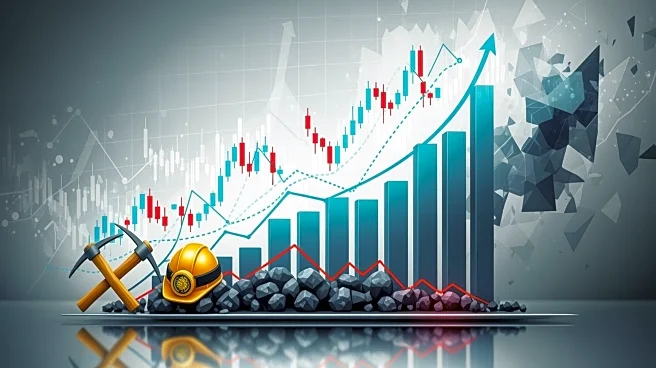What's Happening?
Retail demand for gold in Western countries is experiencing a significant surge as investors seek to secure tangible assets amid global economic uncertainties. In London's Hatton Garden, a historic jewelry
district, there is a notable increase in customers purchasing bullion bars and coins. This trend is mirrored in other regions, such as Germany and Austria, where traders report strong demand for physical gold. The Royal Mint in Britain has recorded its highest single day of e-commerce trading, driven by both existing and new customers increasing their investments in gold. The spot price of gold recently hit a record high of $4,381 per ounce, although it has since decreased slightly. Despite the high prices, retail interest remains robust, with many investors believing that prices will continue to rise.
Why It's Important?
The increased demand for gold highlights a growing trend among investors to seek safe-haven assets in response to economic instability and geopolitical tensions. Gold's appeal as a secure investment is underscored by its price doubling over the past two years and rising 55% this year alone. This surge in demand could have significant implications for the global gold market, potentially driving prices higher and affecting related industries. Investors are also exploring tax-efficient strategies, such as converting gold bars into coins to avoid Capital Gains Tax in the UK. The heightened interest in gold reflects broader concerns about economic security and the desire for liquidity in uncertain times.
What's Next?
As global economic uncertainties persist, the demand for physical gold is likely to remain strong. Investors may continue to increase their holdings in gold, viewing it as a reliable store of value. The Royal Mint and other gold producers may need to adjust their operations to accommodate the rising demand, potentially leading to increased production and staffing. Additionally, the ongoing geopolitical tensions and economic challenges could further bolster gold's status as a preferred investment, influencing market dynamics and investor behavior in the coming months.
Beyond the Headlines
The surge in gold demand also raises questions about the long-term sustainability of relying on precious metals as a hedge against economic instability. While gold is traditionally seen as a safe investment, its price volatility and the environmental impact of mining could pose challenges. Furthermore, the trend of converting gold bars into coins to avoid taxes highlights the complexities of tax regulations and their influence on investment strategies. As investors navigate these challenges, the role of gold in diversified portfolios may evolve, prompting discussions about alternative investment options and the future of precious metals in the global economy.











